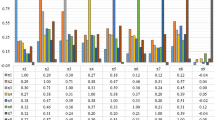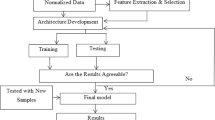Abstract
A correct diagnosis of tuberculosis disease can be only stated by applying a medical test to patient’s phlegm. The result of this test is obtained after a time period of about 45 days. The purpose of this study is to develop a data mining solution that makes diagnosis of tuberculosis as accurate as possible and helps deciding whether it is reasonable to start tuberculosis treatment on suspected patients without waiting for the exact medical test results. We proposed the use of Sugeno-type “adaptive-network-based fuzzy inference system” (ANFIS) to predict the existence of mycobacterium tuberculosis. Data set collected from 503 different patient records which are obtained from a private health clinic (consent of physicians and patients). Patient record has 30 different attributes which covers demographical and medical test data. ANFIS model was generated by using 250 records. Also, rough set method was implemented by using the same data set. The ANFIS model classifies the instances with correctness of 97 %, whereas rough set algorithm does the same classification with correctness of 92 %. This study has a contribution on forecasting patients before the medical tests.







Similar content being viewed by others
References
Davidson S (1999) Davidson’s principles and practice of medicine. Churchill Livingstone, London
Harrison TR (1999) Harrison’s principles of internal medicine. McGraw-Hill Education, New York
Özlü T, Metintaş M, Ardıç S (2008) Akciğer Hastalıkları Temel Bilgiler. Poyraz Tıbbi Yayıncılık, Ankara
Bozkurt H, Türkkanı MH, Musaonbaşıoğlu S, Güllü Ü, Baykal F, Hasanoğlu C, Özkara Ş (2009) Türkiye’de Verem Savaşı 2009 Raporu. T.C. Sağlık Bakanlığı, Ankara
Pena A, Domínguez R, Medel J (2009) Educational data mining: a sample of review and study case. World J Educ Technol 1(2):118–139
Bakar AA, Febriyani F (2007) Rough neural network model for tuberculosis patient categorization. In: Proceedings of the international conference on electrical engineering and informatics, Indonesia, pp 765–768
Sánchez MA, Uremovich S, Acrogliano P (2009) Mining tuberculosis data. In: Berka P, Rauch J, Zighed DA (eds) Data mining and medical knowledge management: cases and applications. Medical Information Science Reference, New York, pp 332–349
Er O, Yumusak N, Temurtas F (2010) Chest diseases diagnosis using artificial neural networks. Expert Syst Appl 37(12):7648–7655
Park M, Kang B, Jin SJ, Luo S (2009) Computer aided diagnosis system of medical images using incremental learning method. Expert Syst Appl 36(3):7242–7251
Yang HH, Wu CL (2009) Rough sets to help medical diagnosis—evidence from a Taiwan’s clinic. Expert Syst Appl 36(5):9293–9298
Yan H, Jiang Y, Zheng J, Peng C, Li Q (2006) A multilayer perceptron-based medical decision support system for heart disease diagnosis. Expert Syst Appl 30(2):272–281
Karahoca A, Karahoca D, Kara A (2009) Diagnosis of diabetes by using adaptive neuro fuzzy inference systems. In: Soft computing, computing with words and perceptions in system analysis, decision and control, Famagusta, pp 1–4
Monzon JE, Pisarello MI (2005) Cardiac beat classification using a fuzzy inference system. In: Proceedings of the 2005 IEEE engineering in medicine and biology 27th annual conference, Shanghai, pp 5582–5584
Gómez C, Hornero R, Abásolo D, Fernández A, Escudero J (2009) Analysis of MEG background activity in alzheimer’s disease using nonlinear methods and ANFIS. Ann Biomed Eng 37(3):586–594
Shlomi T, Cabili MN, Ruppin E (2009) Predicting metabolic biomarkers of human inborn errors of metabolism. EMBO and Macmillan Publishers Limited, Israel Institute of Technology, Haifa
Gören S, Karahoca A, Onat FY, Gören Z (2008) Prediction of cyclosporine A blood levels: an application of the adaptive-network-based fuzzy inference system (ANFIS) in assisting drug therapy. Eur J Clin Pharmacol 64(8):807–814
Jang JS (1993) ANFIS: adaptive-network-based fuzzy inference system. IEEE Trans Syst Man Cybernet 23(3):665–685
Pawlak Z (1984) Rough classification. Int J Man-Machine Stud 20(5):469–483
Witten IH, Frank E (2005) Data mining: practical machine learning tools and techniques. Morgan Kaufmann Publishers, San Fransisco
Jang JS (1992) Self-learning fuzzy controllers based on temporal back propagation. IEEE Trans Neural Netw 3(5):714–723
Sugeno M, Kang GT (1988) Sturcture identification of fuzzy model. Fuzzy Sets Syst 28(1):15–33
Takagi T, Sugeno M (1985) Fuzzy identification of systems and its application to modeling and control. IEEE Trans Syst Man Cybern 15(1):116–132
Mamdani EH, Assilian S (1975) An experiment in linguistic synthesis with a fuzzy logic controller. Int J Man-Machine Stud 7(1):1–13
Tsukamato Y (1979) An approach to fuzzy reasoning method. In: Gupta MM, Ragade RK, Yager RR (eds) Advances in fuzzy set theory and applications. Elsevier Science Ltd, Amsterdam, pp 137–149
Jang JS (1996) Input selection for ANFIS learning. In: Proceedings of the IEEE international conference on fuzzy systems, New Orleans, pp 1493–1499
Werbos P (1974) Beyond regression, new tools for prediction and analysis in the behavioural sciences. PhD Thesis, Harvard University
Chiu SL (1997) Extracting fuzzy rules from data for function approximation and pattern classification. In: Dubois D, Prade H, Yager R (eds) Fuzzy information engineering: a guided tour of applications. Wiley, New York
Ponce J, Karahoca A (2009) Data mining and knowledge discovery in real life applications. IN-TECH
Pawlak Z (1991) Rough sets: theoretical aspects of reasoning about data. Kluwer, Norwell
Lingras P (1996) Rough neural networks. In: Proceeding of the 6th international conference on information processing and management of uncertainty in knowledge-based systems, Granada, pp 1445–1450
Lingras P (1998) Comparison of neofuzzy and rough neural networks. Inf Sci 110(3–4):207–215
Øhrn A (1999) Discernibility and rough sets in medicine: tools and applications. PhD Thesis. Norwegian University of Science and Technology, Trondheim. ISBN 82-7984-014-1
Er O, Yumusak N, Temurtas F (2012) Diagnosis of chest diseases using artificial immune system. Expert Syst Appl 39(2):1862–1868
Author information
Authors and Affiliations
Corresponding author
Rights and permissions
About this article
Cite this article
Uçar, T., Karahoca, A. & Karahoca, D. Tuberculosis disease diagnosis by using adaptive neuro fuzzy inference system and rough sets. Neural Comput & Applic 23, 471–483 (2013). https://doi.org/10.1007/s00521-012-0942-1
Received:
Accepted:
Published:
Issue Date:
DOI: https://doi.org/10.1007/s00521-012-0942-1




